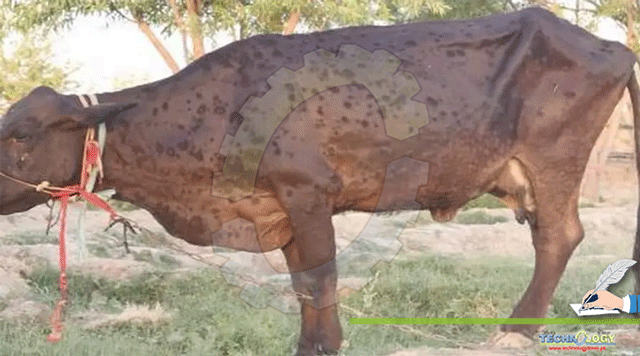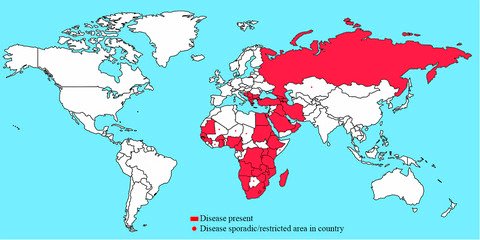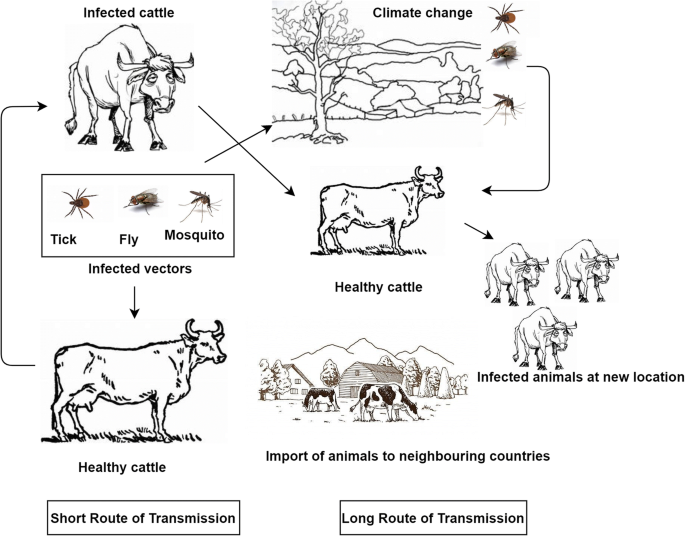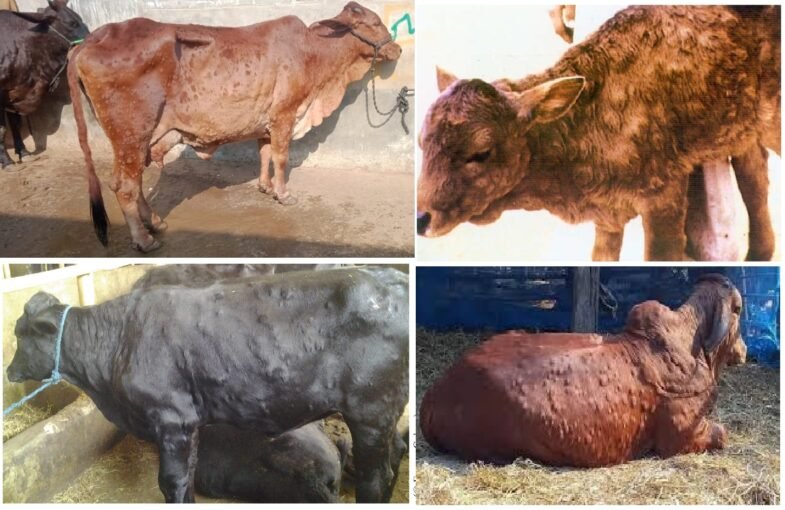Lumpy skin disease has now become an emerging issue of Livestock animals in Pakistan. It’s incubation period ranges from 3 to 4 weeks.

Lumpy skin disease (LSD) is a viral disease of large ruminants. It is responsible for inducing great economic losses to farmers. Neethling pox virus is the main etiological agent. Outbreaks reported from different regions of the world. Ticks, mosquitoes and flies involved in its transmission. As it is a viral disease, we can give supportive treatment only to avoid secondary bacterial infection. Preventive measures include biosecurity, quarantine and vaccination of the animals.
Introduction
Lumpy skin disease is a severe disease of cattle (Bos indicus and Bos taurus) and buffaloes (Bubalus bubalis). Neethling pox virus (Capripox-virus) is the main causitive agent of disease. Bos taurus is more vulnerable to this disease as compared with Bos indicus. This virus does not infect humans. It falls in the same genus as that of sheep and goat pox virus. The World Organization for Animal Health (OIE) categorized it as reportable disease due to its impacts on economy. The mortality rate is low, but the disease causes serious production losses. It is responsible for less feed intake, milk production, body condition score, fertility and abortion in cows.
Epidemiology
Initial reports were available from sub-Saharan Africa. Later on it spread to many African countries in 1970s. In Israel, slaughtering of infected animals reduced disease incidence . In the Middle East, cases confirmed in Kuwait (1991), UAE (2000), Oman (2010), Jordan and Iran (2013). European countries reported its presence through illegal movement of animals. Countries like Russia, Greece, Azerbaijan, Bulgaria, Armenia, Kosovo, Serbia, Albania, Kosovo, and India also reported its presence. A word of mouth reports from various parts of the country would indicate that the disease has recently ingressed into Pakistan.

Origin and transmission
Although the shedding of virus occurs in lacrimal and nasal secretions, semen and milk of the infected animals, there is less risk through direct contact and transmission mostly occurs through vectors. Moreover, Bitting flies (Biomyia fasciata), mosquitoes (Aedes natrionus and Culex mirificens), and ticks (Amblyomma and Rhipicephalus spp.) are responsible its transmission. Experimental transmission through semen also occurs.

Risk Factors
All types of cattle are susceptible. Lactating, weak, and young animals develop more severe disease as compared with healthy, robust, and mature animals. Although wild animals do not possess this virus, but they can act as reservoir hosts. Experimentally infected sheep and goat develop the skin lesions, but no systematic signs reported. Moreover, outbreaks linked with high arthropod activity and rain fall. Capripox-virus is resistant to freezing, and thawing.
Pathogenesis and Clinical Presentation
Incubation period varies from 2 to 4 weeks in case of natural infection. Initially there is rise in body temperature which lasts for a period of one week followed by nasal discharge, lacrimation, salivation, and lameness. Intradermal nodules begin to develop on entire body. Mostly, nodules grow on entire skin but in some cases, they may develop in nostrils and turbinates and may cause snoring and nasal obstruction. Later, nodules disappear rapidly with few exceptions, where they persist as hard lumps.

Differential Diagnosis
Pseudo-Lumpy Skin Disease (Allerton disease or Gulwaddee)
Bovine herpes virus-2 or bovine mammalitis virus is responsible for this disease. Clinical signs include circular necrotic lesions with central area of scab. The scab falls off later, leaving depigmented hairless areas. The disease lasts for as long as 14 days and does not cause death of the animal
Treatment
- There is no specific treatment for this disease.
- Antibiotics administered to avoid secondary bacterial infection such as sulfonamide.
Prevention and Control
Vaccination
- Attenuated Sheeppox-virus used to modulate the immune system of host against LSD. These live, attenuated vaccines contain a living microbe that weakened in the laboratory so it could not induce the disease.
- Infectious microbes can stimulate generation of memory cellular as well as humoral immune responses.
- Not administer vaccine to immunosuppressed and malnourished animals.
Vector Control
Vector traps (light and adhesive traps) and acaricides (pyrethroids, organophosphates and carbamates etc.) usually used to prevent disease transmission.
Biosecurity
- Isolation and inspection of infected animal limits the spread of disease.
- Quarantine of newly purchased animals.
- Restricting the movement of infected animals.
- Culling of infected animals.
This article is jointly written by Dr. Rana Muhammad Athar Ali, Dr. Ghulam Muhammad, Dr. Mughees Aizaz Alvi, and Dr. Muhammad Saqib, Chairman Dept. of Clinical Medicine and Surgery, University of Agriculture, Faisalabad.